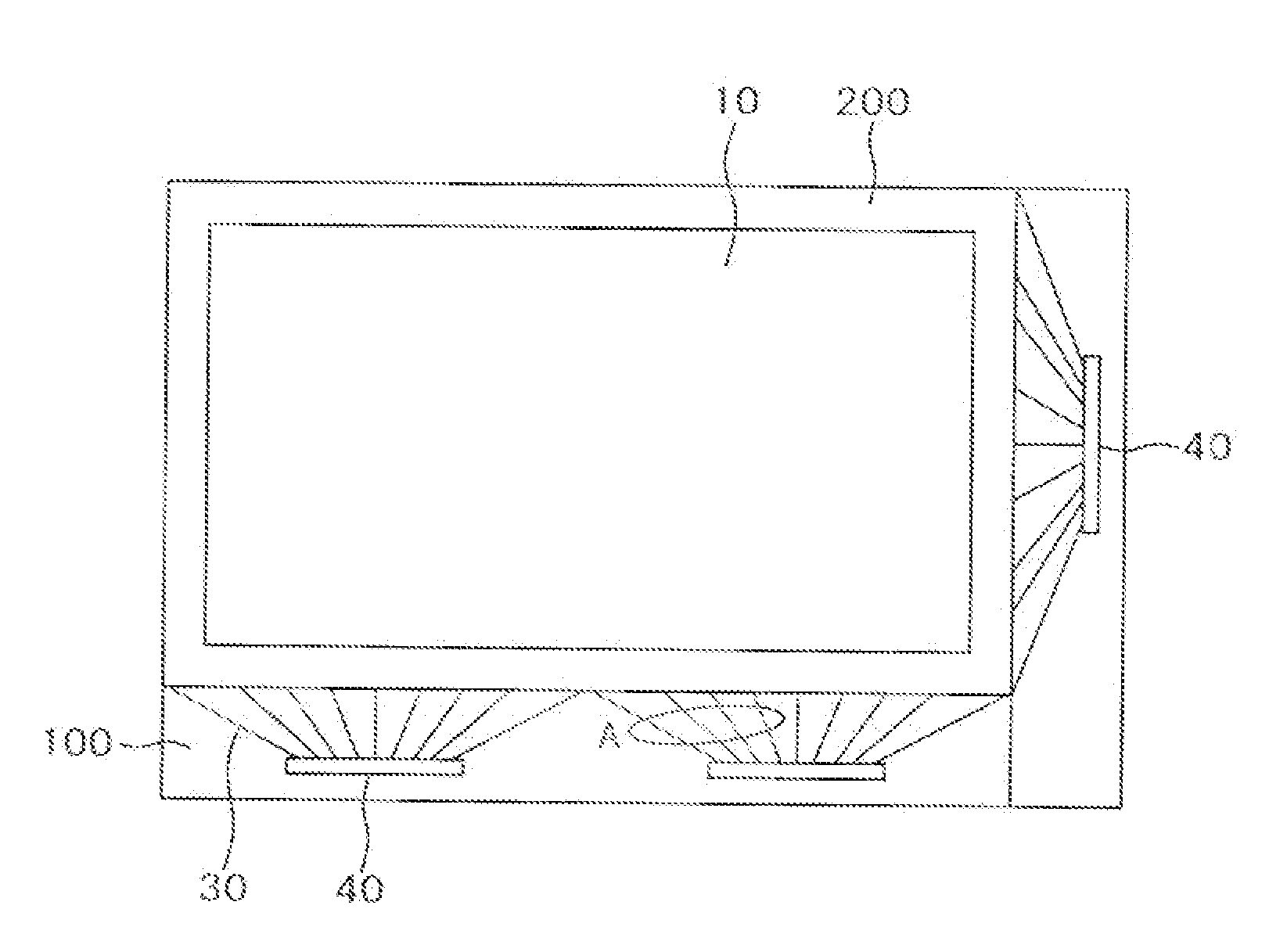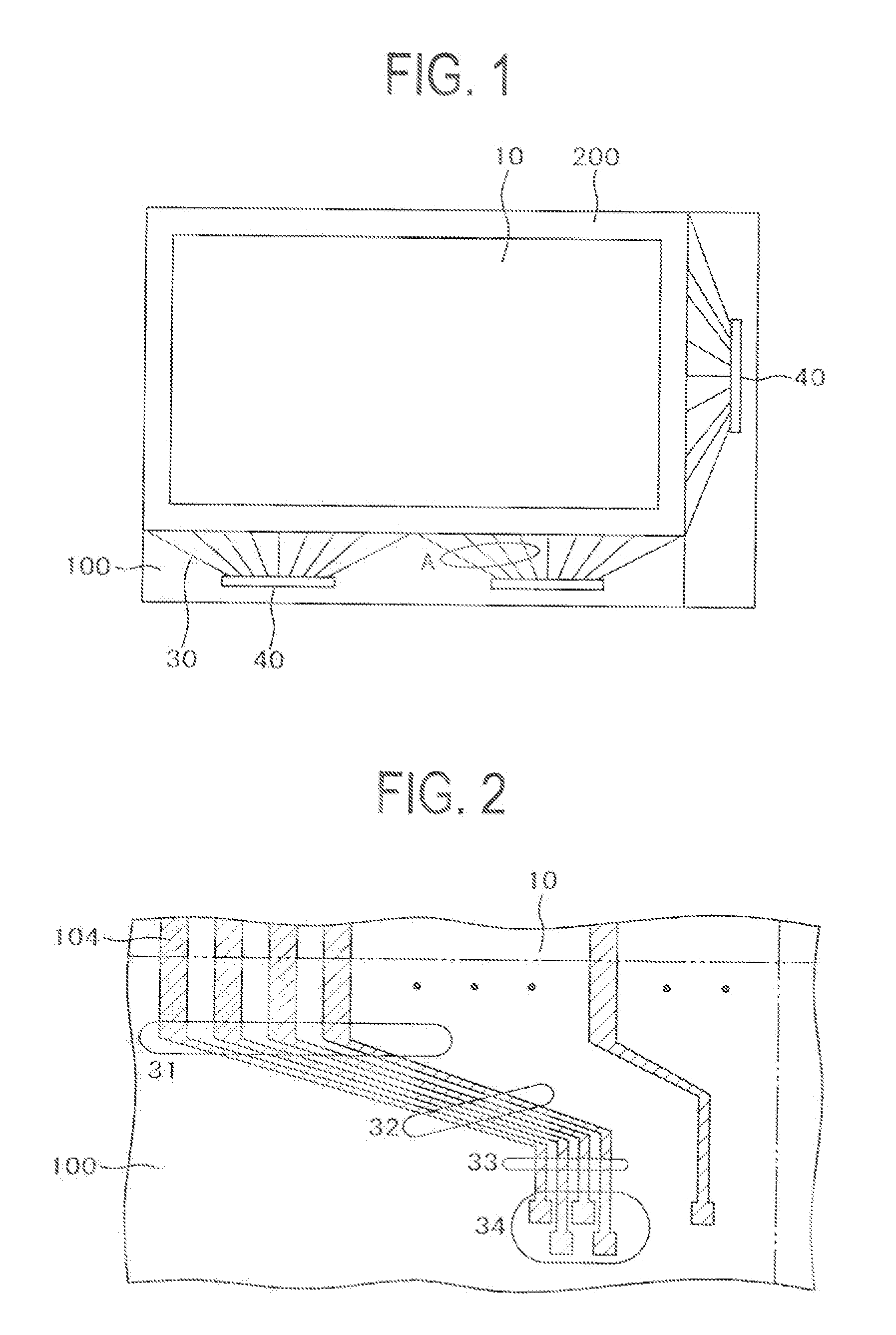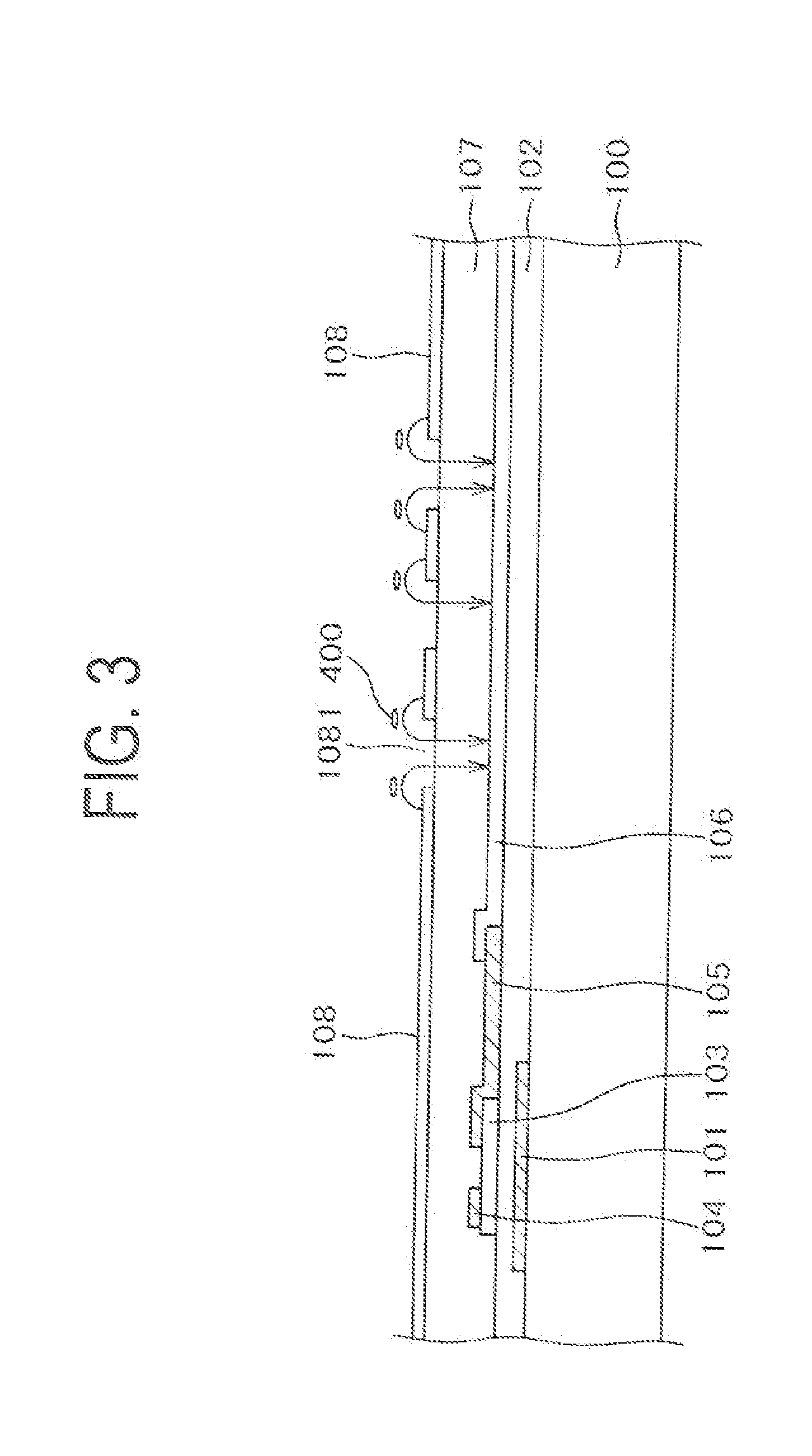Liquid Crystal Display Device
a display device and liquid crystal technology, applied in the field of liquid crystal display devices, can solve the problems of difficult to have enough room to increase the width of a portion of the lead line, and difficult to have enough room to snake the lead line, so as to reduce the uneven brightness, reduce the resistance of the lead line connecting, and the production cost of the liquid crystal display device is not increased.
- Summary
- Abstract
- Description
- Claims
- Application Information
AI Technical Summary
Benefits of technology
Problems solved by technology
Method used
Image
Examples
first example
[0065]FIG. 11 is a cross-sectional view of the configuration for resistance adjustment in the straight wiring portion 33 in IPSLITE 1. In FIG. 11, the drain layer lead line 302 is used for the lead line 30. In FIG. 11, the drain layer lead line 302 is interrupted in the middle of the straight wiring portion 33, and the gap is connected with the bridging ITO. The bridging ITO is formed at the same time as the pixel electrode 106, namely, a lower ITO 50. In IPSLITE 1, the source electrode 105 is formed prior to the formation of the pixel electrode 106. Thus, in FIG. 11, the lower ITO 50 overlaps a portion of the drain layer lead line 302 to establish connection between them.
[0066]As described above, in this example, it is possible to adjust the resistance of the lead line 30 by the lower ITO 50, without using the through hole and the like. The resistance of the lead line 30 can be adjusted by the length of the lower ITO 50. Here, the number of process steps is not increased compared t...
second example
[0067]FIG. 12 is a cross-sectional view of the configuration for resistance adjustment in the straight wiring portion 33 in IPSLITE 2. In FIG. 12, the drain layer lead line 302 is used for the lead line 30. FIG. 12 is different from FIG. 11 in that the pixel electrode 106, namely, the lower ITO 50 is formed prior to the formation of the source electrode 105 in IPSLITE 2. Thus, the drain layer lead line 302 in FIG. 12 overlaps a portion, of the lower ITO 50 to ensure electrical continuity between the two electrodes. The other configuration and effect are the same as those in the first example.
third example
[0068]FIG. 13 is a cross-sectional view of the configuration for resistance adjustment in the straight wiring portion 33 in IPSLITE 3. In FIG. 13, the drain layer lead line 302 is used for the lead line 30. In FIG. 13, the pixel electrode 106, namely, the lower ITO 50 is used as the bridging ITO for the resistance adjustment. The resistance of the lead line 30 can be adjusted by the length of the lower ITO 50.
[0069]FIG. 13 is different from FIGS. 11 and 12 in that the lower ITO 50 is directly formed on the TFT substrate 100. Thus, a through hole is formed in the gate insulating film 102 to establish connection between the drain layer lead line 302 and the lower ITO 50 for the resistance adjustment. Of course, the lower ITO 50 below the gate insulating film 102 should be patterned and formed before the gate insulating film 102 is attached thereto. However, the patterning of the lower ITO 50 is performed at the same time as the patterning of the pixel electrode 106, so that the number...
PUM
 Login to View More
Login to View More Abstract
Description
Claims
Application Information
 Login to View More
Login to View More - R&D
- Intellectual Property
- Life Sciences
- Materials
- Tech Scout
- Unparalleled Data Quality
- Higher Quality Content
- 60% Fewer Hallucinations
Browse by: Latest US Patents, China's latest patents, Technical Efficacy Thesaurus, Application Domain, Technology Topic, Popular Technical Reports.
© 2025 PatSnap. All rights reserved.Legal|Privacy policy|Modern Slavery Act Transparency Statement|Sitemap|About US| Contact US: help@patsnap.com



